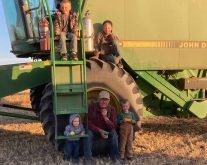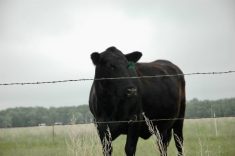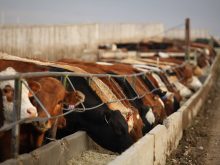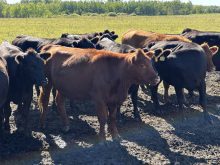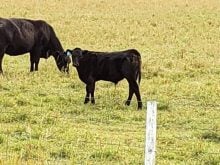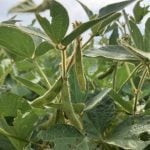At the time of writing this article in the latter half of December, U.S. and Canadian feeder cattle prices were trading at or near historical highs.
I’ve received many inquiries from cattle producers regarding the price outlook for feeder cattle in 2025. The benchmark for the western Canadian feeder market is central Alberta. During December 2024, quality-genetic backgrounded yearling steers averaging 900 lbs. were trading around $350 per hundredweight (cwt) and similar-weight heifers were quoted at $320/cwt.
Steer calves weighing 700 lbs. were readily trading around $400/cwt and similar-weight heifers were selling for $350/cwt. Steer calves weighing 500-525 lbs. were selling for $500/cwt while heifers were at a $50-$60/cwt discount. The feeder cattle market is factoring in a sharp year-over-year decline in available supplies for the 2025 calendar year.
Read Also

Gentle treatments for pain in the neck
Heading toward year-end, people unknowingly tense up against the cold and busyness, causing neck pain that can often be treated with appropriate support and gentle mobility, athletic therapist Kathlyn Hossack says.
We mentioned in the previous article that the U.S. closed the border to Mexican feeder cattle after New World screwworm was found near the Mexico-Guatemala border. The U.S. imports about 1.2 million Mexican feeder cattle every year. At this stage, the fed and feeder cattle markets are factoring in no imports of Mexican feeder cattle for 2025. However, ideas are that the normal trade will resume in March or April, but those are only estimates.
U.S. and Canadian fed cattle prices have been percolating higher over the past few weeks. At the time of writing this article in mid-December, Alberta packers were buying fed cattle at $250/cwt f.o.b. feedlot in southern Alberta, up $6-$7/cwt from a month earlier. Cattle on feed in Alberta and Saskatchewan as of Dec. 1, 2024 were 1.092 million head, down six per cent or 68,317 head from Dec. 1, 2023. More importantly, cattle on feed 150 days or longer as of Dec. 1, 2024 were 46,353 head, down 52 per cent from 12 months earlier. Fed cattle supplies are somewhat tighter in the short term.
The nearby live cattle futures are being pulled higher by potential strength in the deferred positions. On the December WASDE (world agriculture supply and demand estimates) report, the U.S. Department of Agriculture lowered its beef production expectations in the third and fourth quarters, factoring no import of Mexican feeder cattle for the 2025 calendar year.

Notice in the table here that third quarter beef production for 2025 was estimated at 6.35 billion lbs., down 430 million from the third quarter of 2024. U.S. fourth-quarter beef production for 2025 was estimated at 6.04 billion lbs., down 890 million from the fourth quarter of 2024. These production estimates have been supportive for the U.S. and Canadian feeder cattle market.
U.S. feeder cattle outside finishing feedlots as of Jan. 1, 2025 are projected to be 23.44 million head, down 776,000 from Jan. 1, 2024.
This is a modern-day low after six consecutive year-over-year decreases in the U.S. calf crop. In Western Canada, fed cattle outside finishing feedlots as of Jan. 1 are projected to total 2.81 million head, down 160,000 head from Jan. 1, 2024.
There was no significant heifer retention in 2024. The industry is expecting U.S. and Canadian cow-calf producers to hold back heifers in the summer and fall of 2025. In the U.S., we’re expecting about 500,000-600,000 heifers will be held back for herd rebuilding. In Western Canada, we’re expecting about 60,000 heifers will be retained. The feeder cattle market has potential to incorporate a risk premium from August through December 2025 due to the uncertainty in available numbers.

The feeder cattle market is expected to trade at or near historical highs throughout 2025. We could see additional strength in the latter half of the year. Feedlot margins have improved in the short term, which should keep finishing lots aggressively bidding for feeder cattle. Secondly, the beef and cattle markets are factoring in lower beef production in the latter half of 2025.
Analysts are factoring in no U.S. imports of Mexican feeder cattle for the calendar year. Feeder cattle supplies in Canada and the U.S. as of Jan. 1 will be down sharply from year-ago levels due to lower calf crops. We expect 2025 will be the first year of major heifer retention in Canada and the U.S., which will result in few heifers in the feeder cattle supply.




